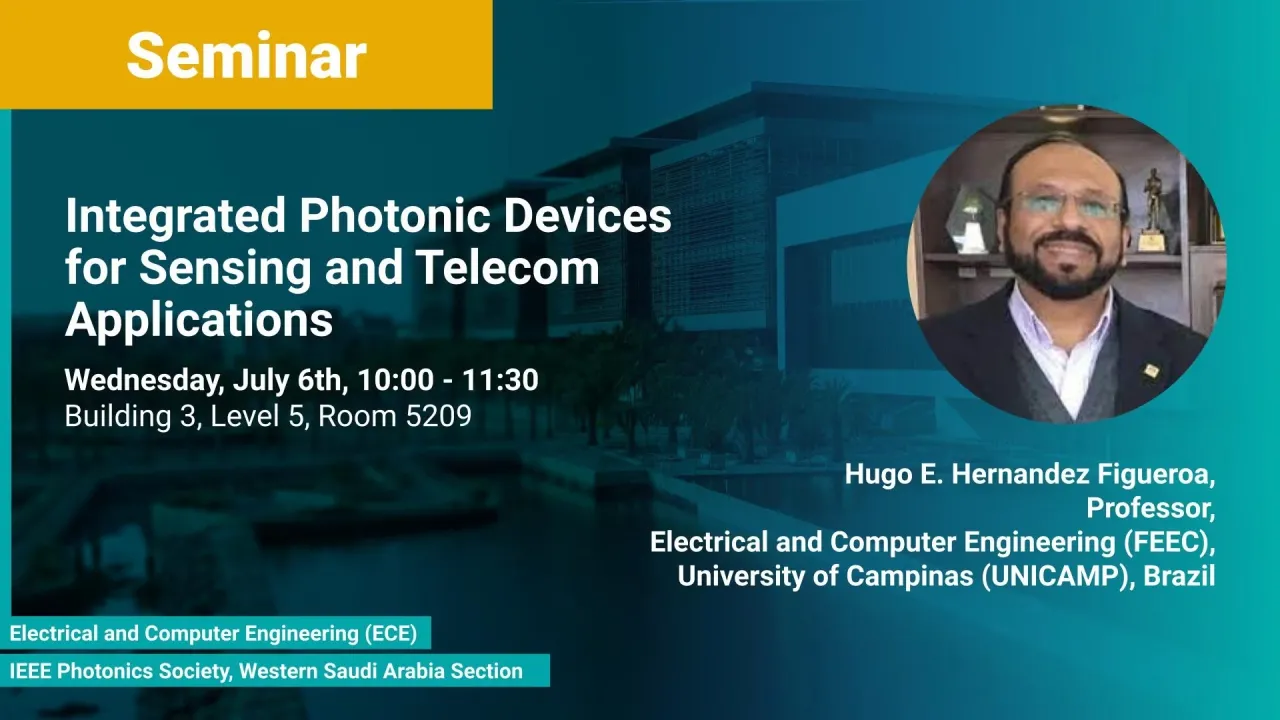
Integrated Photonic Devices for Sensing and Telecom Applications
- Prof. Hugo E. Hernandez Figueroa, University of Campinas (UNICAMP)
B3 L5 R5209
This talk will be focused on Integrated Photonics technology, which demands strong and robust confinement of light in order to attain the maximum possible integration of photonics devices on a single chip. Keeping this in mind, three applications based on LEMAC’s recent developments will be presented in this talk.
Overview
Abstract
This talk will be focused on Integrated Photonics technology, which demands strong and robust confinement of light in order to attain the maximum possible integration of photonics devices on a single chip. Keeping this in mind, three applications based on LEMAC’s recent developments will be presented in this talk. The first one is related to the topological optimization design of a non-intuitive SOI photonic nanoantenna. The fabricated device has a footprint of 1.78 μm x 1.78 μm, and bandwidth broader than 150 nm. Other novel nanoantenna designs involving phased arrays will also be presented. The second one is related to a thorough study of the properties of sensors based on multimode waveguides, which allow us to establish new criteria for designing more sensitive structures. Two novel structures will be presented, one exploring TE modes and the other, hybrid, exploring TE and TM modes. In both cases very competitive theoretical Limit of Detections (LOD) are attained, in the order of 10-7 Refractive Index Unit (RIU). The third example will discuss a novel compact nonreciprocal device: a compact magnetless isolator for optical communication systems based on a ring resonator with an outer layer made of silicon and an inner layer made of a magnetooptical material that does not require an external magnet to keep its magnetization saturated. This novel isolator exhibits insertion loss and isolation levels of about -1.9 dB and -21 dB, respectively, and a footprint of one order of magnitude smaller in comparison with other isolator designs known from the literature, therefore, suitable for very high integration density applications.
Brief Biography
Hugo Enrique Hernandez Figueroa completed his PhD from Imperial College London (1992) and carried out postdoctoral activities at University College London (1993-1995). He is a full professor at UNICAMP (2005), Brazil, head of the Applied and Computational Electromagnetics Lab (LEMAC), and the director of the Brazilian Science and Technology Lab for Photonics Communications (FOTONICOM). He is an OPTICA (formerly OSA) Fellow, and a senior member of IEEE and SPIE. His work is focused on the R&D of photonics and microwaves devices applied to telecommunications and biotechnology. He has published more than 145 papers in reputed journals and serving as an editorial board member of Journal of IEEE/OPTICA Lightwave and Technology, IEEE Photonics Journal, and IEEE Journal of Selected Topics on Quantum Electronics. He has also served as general chair of a number of international conferences and has delivered almost one hundred invited talks worldwide. Presently he serves as a member of the IEEE Photonics Society Publications Council (2022-2024).
ResearchID: F-4692-2015 / ORCiD: 0000-0003-2419-6979